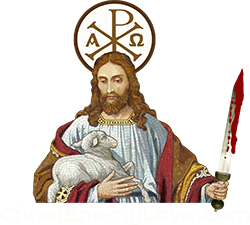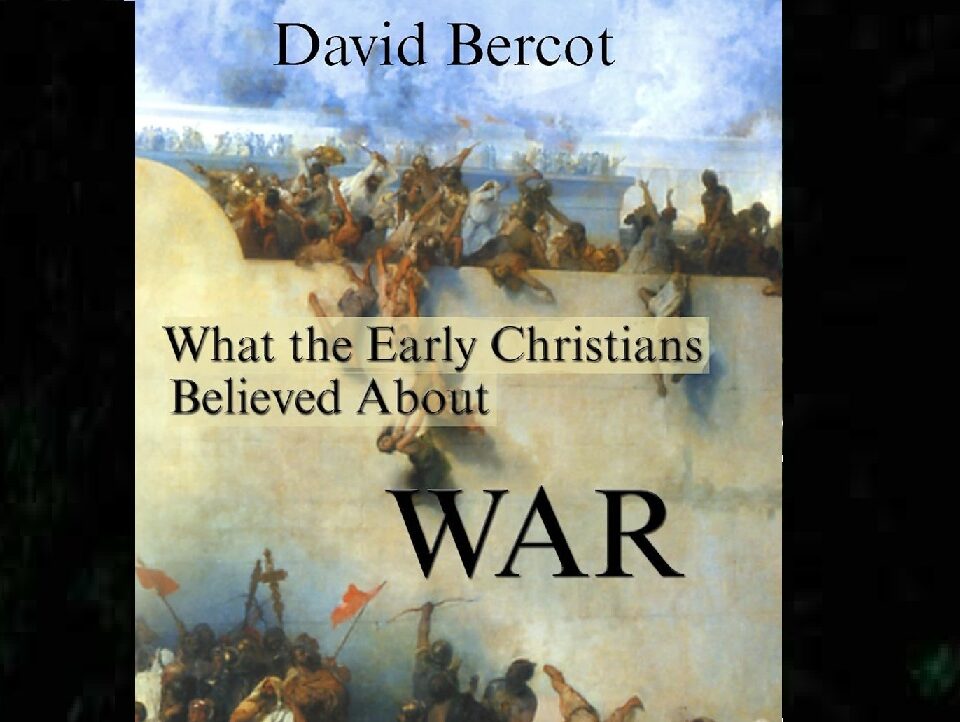Gabrielson, Paul’s Non-Violent Gospel: The Theological Politics of Peace in Paul s Life and Letters, pp 52-54.
Whenever the subject of Jesus’ peaceableness is discussed, questions about the incident at the temple invariably arise. Does this scene not, at minimum, put a question mark by Jesus’ commitment to non-violence?
To begin with, Matthew’s characters appear to be unimpressed by the “violent” part of Jesus’ actions. Jesus entered the temple, drove out traders (both sellers and buyers) and upended tables and chairs. What kindles the ire of the chief priests and scribes, however, is not this series of actions, but that Jesus heals the blind and the lame, and receives public acclamation because of it. Jesus’ “violent” behavior in the temple merits no more attention in Matthew’s narrative, so that Luz can claim his action “has no importance of its own in the Gospel of Matthew?[1] The account reads as though the chief priests and scribes were unaware of his “violent” actions, otherwise it is difficult to explain why they asked Jesus about the cries of children rather than about his authority to drive out the people who carried out what was, ostensibly, a legitimate service to the temple.[2]
Matthew evidently sees no (intractable) tension between the actions of Jesus in the temple and his teaching in 5:38-41. In a variety of scenarios in Matthew’s gospel, the gentle Jesus (11:29; 21:5) demonstrates “forcible behaviour”[3] To evacuate Jesus of all forceful speech and action would be to denude him of his prophetic role, a role which many interpreters see to be at play in just this passage where he engages in a bit of prophetic “street theater.”[4] Rather than serving as a warrant for “violent” behavior, the temple demonstration serves to highlight Jesus’ alignment with the prophets who aggressively opposed the social and economic injustices that were rife even among God’s people (e.g., Jer 7:1-15).[5]
In sum, the Gospel of Matthew, composed in a culture steeped in the ubiquity of violence, preserves the unmistakable fingerprints of violence in the stories its author recorded or composed. From beginning to end and across all levels of socio-economic relationships, Matthew’s gospel reflects the acceptance of violent conflict as part of the status quo of human life. Invading our violent human history, Matthew’s Immanuel, arriving as a vulnerable infant, interrupts the norms of human conflict by teaching and demonstrating that returning good for evil, loving enemies, forgiving, and welcoming strangers are the God of Israel’s strategies for engaging enemies and conquering evil. God’s empire comes humbly, not resisting Caesar’s empire on Caesar’s terms (like the zealots of the middle decades of the first century), but equally not blessing the politics of violence that uphold Caesar’s rule and by which the nations “lord over” their subjects. Matthew’s gospel consistently records the non-violent ethos of Jesus’ teaching, and Jesus’ actions cohere with his sayings. Despite the apparent difficulties created by the violent eschatological judgment recorded in Matthew’s gospel, I submit that this eschatological assurance of judgment serves to preserve the non-violent witness of Jesus’ first disciples. To borrow and extend James Dunn’s phrase, what is clear is not just that Jesus was remembered, but that he was remembered as one who chose non-violent resistance instead of violent resistance, even when it cost him his life.
[1] Luz, Matthew, 3:10.
[2] Ibid., 3:11, finds it historically “plausible that only a relatively obscure event would explain why neither the temple police nor the Roman garrison intervened” On the legitimate role of sellers and money changers (and agreement with Luz on the minor role of the incident), see Davies and Allison, Matthew, 3:136-37; and Catchpole, “Triumphal entry, 333.
[3] Davies and Allison, Matthew, 3:137.
[4] Cf. Jer 27:1-22 for one instance of symbolic “street theatre” by a Hebrew prophet. The term comes from Hays, Moral Vision, 334. See Hengel, Was Jesus a Revolutionist?, 16-17; Wright, Jesus and the Victory, 413-28; Davies and Allison, Matthew, 3:133-34; Catchpole, “Triumphal entry,” 334.
[5] On the economic advantages of the priestly class in Jerusalem, see Josephus Ant. 20:181, 205-6, and As. Mos. 7.6.




